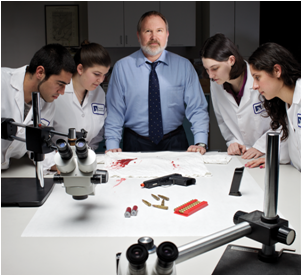CSUEB trains future law, justice, and forensic science pros

Keith Inman with CSUEB students
- June 7, 2011 5:16am
Spurred on, in part, by TV depictions of glamorous criminologists quickly solving cases, interest in forensic science, criminal justice administration, and associated fields has soared. Fortunately, the job outlook in the coming decade remains bright with demand expected to grow from 10 to 22 percent, depending on specialty. Nationwide, for instance, the U.S. has fewer than half the forensic pathologists it needs, according to a 2009 National Academy of Sciences report to Congress. The report also called for major reforms to the forensic science system nationally, including certification and accreditation, and new research to strengthen the scientific basis and reliability of methods, such as fingerprint and toolmark analysis, which have not undergone rigorous scientific study.
"Forensic science is not merely just popular at the moment but undergoing the most vigorous challenge in its 150 years," says Assistant Professor Keith Inman of the CSUEB Department of Criminal Justice Administration (CRJA). "This makes it a rich time to be in academia."
"What I find really exciting, especially with the (University's) emphasis on STEM (science, technology, engineering, and mathematics), is the opportunity to grow or be in the vanguard for progress in forensic science." That includes training the next generation of leaders in STEM education, he says.
The national push to further professionalize the role of criminologists, including criminalists, specialists who collect and analyze evidence, and improve the science they employ also makes it a rich time for CSUEB students studying CRJA and overlapping disciplines, from anthropology to computer science.
Read more in the spring issue of Cal State East Bay magazine.
MB